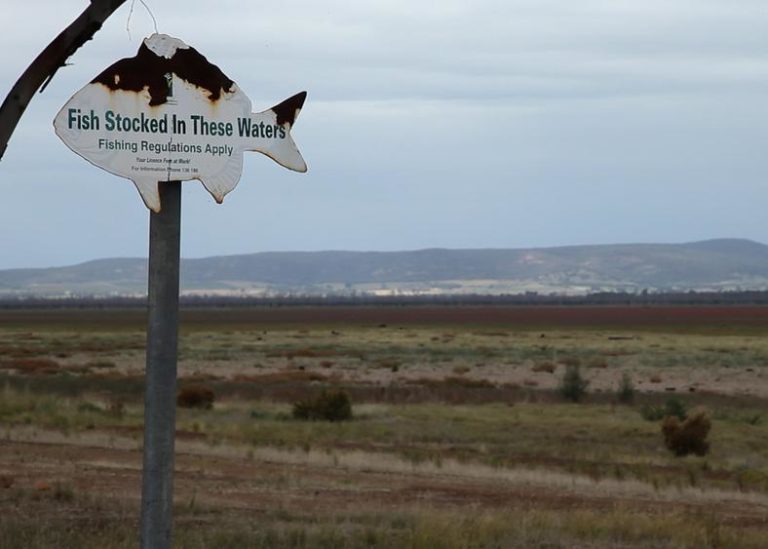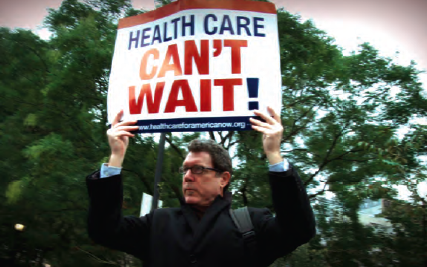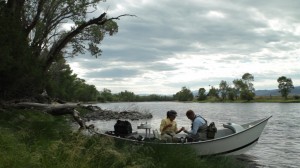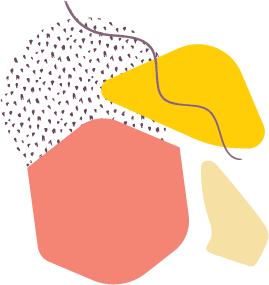Water. It’s the Earth’s most valuable resource. Our cities are powered by it, agriculture and other industries depend on it, and all living things need it to survive. But instead of treating it with care, we’ve allowed it to become polluted with toxic chemicals and agricultural and industrial waste. And it’s very possible that in the near future, there won’t be enough to sustain life on the planet.LAST CALL AT THE OASIS sheds light on the vital role water plays in our lives, exposes the defects in the current system, shows communities already struggling with its ill-effects and introduces us to individuals who are championing revolutionary solutions. It also presents a convincing argument for why the global water crisis will be the central issue facing our world this century.Given the importance of water to our existence, you would think this would be a matter of great urgency. In public opinion polls, Americans consistently rate clean water as our most important environmental issue. But our behavior doesn’t reflect this. We continue to act as if the supply is endless, when in fact, it is rapidly dwindling. One thing is clear: The longer we remain in denial, the less chance we have of finding ways to combat this problem.The filmmakers explore the issue from the standpoint of both quantity and quality, with insight from the Pacific Institute’s Peter Gleick, University of California, Irvine earth science professor Jay Famiglietti, University of Arizona law professor Robert Glennon, author of Unquenchable, Scripps Institute researcher Tim Barnett and writer Alex Prud’homme, whose manuscript for the book The Ripple Effect served as an early resource. We see how because of overuse, population burdens and climate change, our water supplies are no longer being replenished. It is also revealed how the issue of water cannot be approached without understanding its connection to everything else, from the food we eat to the clothes we wear to the electricity we depend on.LAST CALL AT THE OASIS examines the imminent threat to the water supply in Nevada and California, illustrating the environmental, social and political factors that have resulted in a fast-approaching crisis. Whether it’s overuse of the Colorado River and the rapid rate of development in Las Vegas causing Lake Mead to dry up or Central California’s farmers losing access to Bay Delta water for irrigation because of endangered fish populations, each area’s water use has regional and national implications. To provide a glimpse of what could very well be in store for both regions, the filmmakers visit Australia, while in the midst of a decade-long drought, where farmers are forced to sell their livestock because there isn’t enough water to raise cattle.The film also examines serious water quality issues. We follow famed environmental advocate Erin Brockovich as she visits Midland, Texas, where the bright green water found in a community’s domestic wells has dangerously high levels of hexavalent chromium, the same dangerous toxin she helped to uncover in Hinkley, California in the mid-90s. We also meet Tyrone Hayes, a scientist at UC Berkeley, who has discovered that the herbicide Atrazine, the most common contaminant of drinking water and groundwater, can at low levels cause some male frogs to produce enough estrogen to actually turn them into females. Another activist, Lynn Henning, a family farmer and water sentinel for the Michigan Sierra Club, is battling Big Ag over the pollution from CAFOs (Concentrated Animal Feeding Operations) in her area. Antibiotics, growth hormones, chemicals, toxic waste, and bacteria from the massive amounts of livestock manure are seeping into the water table.And one reason all these public health affronts are able to occur is because our regulatory system is broken and broke. Through the Toxic Substances Control Act, the Environmental Protection Agency has issued regulations to control only five existing chemicals out of the more than 80,000 registered, while approving 1,000-2,000 new chemicals each year. And regulations tend to protect industry, such as the so-called “Halliburton loophole”, pushed through by then-Vice President Dick Cheney in 2005, in which companies that use a controversial practice of natural gas extraction called hydraulic fracturing or “fracking” are exempted from having to disclose the chemicals they employ.The filmmakers devote a portion of the film to the prevailing misconceptions on the part of the American public about the inferiority of municipal or “tap” water, which have helped to create the country’s $11.2 billion a year bottled water industry–despite the fact that 45% of the bottled water sold in the US originates as tap water. People who buy bottled water thinking it’s safer will be surprised to discover that what they drink is not regulated by the EPA, which regulates municipal water, but instead by the much less stringent Food and Drug Administration. In considering potential solutions, the film explores the seemingly obvious, but cost-prohibitive and greenhouse gas-emitting practice of desalination, as well as the less expensive, more environmentally sound “toilet to tap” approach which recycles waste-water into drinking water and has worked extremely well in other countries, such as Singapore. However, in order to gain public acceptance in the U.S., this technology must overcome the “yuck” factor. Psychologist Paul Rozin and actor Jack Black help facilitate an examination of how Madison Avenue and Hollywood might be enlisted to conquer our resistance.Despite predictions that this century’s wars will be fought over water access, LAST CALL AT THE OASIS ends on a hopeful note with a visit with Friends of the Earth Middle East, the only regional organization that brings together Israelis, Palestinians and Jordanians committed to working cooperatively to tackle the challenges of providing clean water for all three nations that depend on the Jordan River. It underscores the message that the global water crisis affects all of us and that it’s going to take all of us, working together, to fix it.
Summary info for schedule – will be hidden on film page
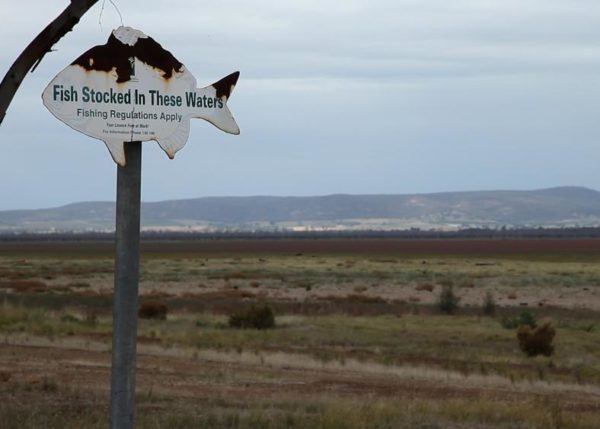
Last Call at the Oasis
105-minutes
Screening day / time
Last Call at the Oasis
Last Call at the Oasis
Filmmaker Notes:
The idea for LAST CALL AT THE OASIS started with Participant Media, the company founded by Jeff Skoll with the purpose of using movies and other forms of media to both entertain and illuminate important issues in order to inspire social change. Explains Diane Weyermann, Participant’s Executive Vice President of Documentary Films and one of the film’s Executive Producers, “Water is one of the five global threats that Jeff Skoll has identified as the most urgent. For some time, we have wanted to do a documentary on this topic. We were just waiting until we found the right story.” Weyermann recalled attending a meeting with writer Alex Prud’homme and independent producers Carol Baum and David Helpern, as well as Participant Media President Ricky Strauss and Participant’s Executive Vice President of Production Jonathan King. Prud’homme had co-authored My Year in France with his great aunt, Julia Child, which served as inspiration for half of Nora Ephron’s screenplay for the film Julie & Julia. Weyermann says, “When Alex Prud’homme came in with a partial manuscript for the book that was published as The Ripple Effect – The Fate of Fresh Water in the 21st Century, we optioned it as a starting point for LAST CALL AT THE OASIS.” Baum and Helpern were attached as Executive Producers. Weyermann then proceeded to pull together her “A-team” for the project. She began with Academy Award®-winning director Jessica Yu, someone she had known for many years, having first met when Weyermann was at the Sundance Institute, prior to joining Participant. She then contacted Academy Award® nominated Producer Elise Pearlstein, with whom Participant had just collaborated on the highly-successful Food, Inc. Pearlstein and Yu had recently worked together on Protagonist, a documentary that explored the relationship between human life and Euripidean dramatic structure by weaving together the stories of four men: a German terrorist, a bank robber, an “ex-gay” evangelist, and a martial arts student. Says Weyermann, “Jessica is an amazing director– so creative and cinematic and Elise is an extraordinary producer.” Yu and Pearlstein enlisted editor Kim Roberts, who had also cut Food, Inc. and was one of the editors on Waiting for “Superman”, and Director of Photography Jon Else, whom Yu had long admired and met on a Sundance Jury. Yu had worked with Composer Jeff Beal on her previous films Protagonist, Ping Pong Playa and In The Realms of The Unreal. “The LAST CALL production team is really a top-notch group,” says Weyermann. The first six to eight months were spent doing pure research. Since the film wouldn’t be coming out for at least two years, Yu and Pearlstein were challenged to make sure everything it covered would still be timely while telling a clear story. Prud’homme’s draft manuscript provided primarily general ideas, particularly regarding the lack of urgency around the topic of water in the United States. The filmmakers decided to focus on domestic water issues since Americans have the largest water footprint, yet feel immune and disconnected from what is a growing global crisis. As Yu points out, “How we deal or do not deal with this water crisis in the United States affects the rest of the world. Everything about water is interconnected.” After reading about his work, Pearlstein knew that water expert Peter Gleick of the Pacific Institute would be an important voice in the film. When she contacted Gleick to discuss his participation, he responded by saying “What water story are you telling?” Having devoted his career to the study of water, Gleick knew full well the complexity of the issue. “Water is an incredibly complicated issue,” said Weyermann. “It didn’t surprise me because we saw this with Food, Inc. as well. To understand the core issue, you have to deal with the story strands. That is what is brilliant about Jessica’s work. She can connect the dots without over-simplifying the issue.” The idea from the beginning of the project was to build through several personal accounts and characters with each providing a piece of the bigger picture. The underlying structure moves from issues of shortage to quality to psychology and solutions. “We knew the film had to be a structured mosaic,” said Yu. As she started to piece together the mosaic, Yu was interested in the concept of groundwater as our “savings bank” in times of need, an idea covered by Robert Glennon in his book Unquenchable. The unsustainable use of groundwater is an issue he has focused on extensively for years. “Robert Glennon is impassioned about the need for awareness,” said Yu. “Coming from a legal background, he has an appreciation for the obstacles to systemic change.” Pearlstein had read about the work of Dr. James S. “Jay” Famiglietti at the University of California, Irvine’s Center for Hydrologic Modeling and his work with the G.R.A.C.E twin satellite program (Gravity Recovery and Climate Experiment). Focusing on climate and ground water changes from space, the satellites clearly indicated alarming rates of groundwater depletion in California’s Central Valley. Famiglietti strongly believed that his findings would be enough to convince people that immediate action was needed. Instead, they created a storm of controversy among the state’s water managers and farmers, who produce 25 percent of the food consumed in the U.S. The filmmakers were drawn to the story of water in Las Vegas because it speaks to the contrast between fantasy and reality. The generous use of water on the Strip belies the fact that Vegas’ growing population is maxing out the available water resources. The Southern Nevada Water Authority’s Pat Mulroy continues to fight for the water her city needs to maintain it as the huge economic driver of the State of Nevada. “Pat Mulroy is such a straight-shooter,” said Pearlstein. “Las Vegas is an easy target because it seems like a city built on excess, but Pat is quick to remind us that Vegas is just a canary in the coalmine.” “For the farmers, it’s tough,” adds Pearlstein. “Because agriculture uses so much water, when water is scarce, the farmers feel it first — in Nevada, California, Australia. Everywhere. They are trying hard to be responsible stewards of their water resources. But the fight is often city vs. farmer. Cities trump farmers because more people means more votes, but the farmers’ point is: where are you going to get your food?” The filmmakers had read about Australia’s Campaspe Irrigation district, where farmers John and Sandra Horkings had decided to give up on agriculture after a decade-long drought. For four years, they received no water, yet still had to pay for their water rights. The farmers felt they had no choice but to sell their rights back to the government. “Even though they were right in the middle of the heart-wrenching decision to shut down their farm, they treated us warmly and agreed to let us film the day they sold off their livestock,” said Pearlstein. “We were surprised to learn that many of these Australian farmers living through year after year of drought were very resistant to attributing it to climate change,” said Pearlstein. “The men in particular didn’t want to accept that climate change could be real because it’s such a profound threat. If this is the new normal, it’s an end to their way of life. Interestingly, the women seemed more accepting. Their feeling was, well, just in case climate change is real, we better be prepared.” In focusing on water quality, the filmmakers wanted the film to accurately reflect the frustrations that exist because of a broken infrastructure. “The EPA doesn’t have the funding or legislative tools it needs to do its job.” says Yu. “The public is largely unaware of the threats to its water supply – and things aren’t likely to change unless they become aware.” “It’s important that these threats aren’t dismissed as treehuggers’ hand-wringing,” says Yu. “Not only are we not protected in the way we like to believe, but the system doesn’t allow us to hold polluters accountable.” From the beginning, Yu and Pearlstein were eager to include water activist Erin Brockovich in the film since she has become a symbol for environmental whistleblowers. They were especially impressed that, after being catapulted to fame after being portrayed by Julia Roberts in the Oscar®-winning 2000 film, she wasn’t just sitting back and enjoying her “15 minutes.” “Erin Brockovich is still fighting so many battles. People don’t have faith in their environmental agencies anymore. It’s very telling that she’s receiving thousands of emails a month – people are contacting her, not the EPA,” says Yu. “Erin has been on the front lines for over 20 years now. She’s compassionate, relentless and totally kick-ass.” “Erin would stay until the lights go out,” Pearlstein says. “She has started compiling a map that plots the locations and contamination issues of the people who contact her. The map has become very important to Erin – it paints a picture of what’s going on and shows that these are not isolated events. People like Erin carry such a burden. She knows she can’t help everyone, but she can help get the information out.” The filmmakers approached Schlumberger, the primary energy company under investigation for the hexavalent chromium water contamination in Midland, Texas, but they declined their request for an interview. Associate Producer Sandra Keats became aware of water activist Lynn Henning when she heard that Henning was a North American winner of the 2010 Goldman Environmental Prize. The filmmakers immediately connected to this Michigan family farmer’s ‘David and Goliath’ story about her water quality monitoring programs that measure pollution levels from CAFOs, while she documents their impact on local watersheds. Said Yu. “Lynn not only fights water pollution, she also drives a tractor, bakes pies, and feeds anyone who comes into the house.” Their research on water quality issues also led them to scientist Tyrone Hayes, who has been looking at the connection between herbicide run-off and problems in amphibian development. Hayes has had a long-running dispute with the chemical company that originally hired him to study Atrazine. “Tyrone’s is a contentious story, but it illustrates the increased burden on the scientific community to stand up for its research,” said Yu. “If you believe your findings have uncovered a threat to public health, are you going to try to help get the word out, even if it means putting your reputation on the line?” “We especially wanted to talk to the company that produces Atrazine – we were very disappointed that they wouldn’t participate,” says Pearlstein. “Atrazine is effectively banned in Europe, but not in the US, so we would have liked to have heard their story.” The filmmakers felt strongly that in examining possible solutions to the water crisis, they needed to investigate the various psychological reasons for our resistance to change, even when we know it’s for our own good. Early in their research stage, Pearlstein had read about Paul Rozin, a psychologist who studies disgust, and she was immediately intrigued. Rozin had been enlisted by the Singapore government and the Orange County water district to help with a tough problem: how to get the general public to accept recycled sewage water in their drinking water supply. “This was a pure case of human psychology butting up against scientific reason,” Pearlstein said. “This water has been proven to be safe, but people instinctively find it gross. We knew that the psychology of change would be a theme running though the film, and recycled water seemed the perfect way to explore it, with Paul Rozin as the ideal guide.” They came up with the ingenious idea to work with a group of ad experts and create an ad campaign as part of their experiment. But the campaign depended on finding the right spokesman for their recycled sewage water in a bottle. “When it comes to recycled water, people find it icky even though it’s clean,” said Yu. “So we wanted to experiment with having a celebrity ‘endorse’ recycled water in the same way that celebrities have endorsed bottled water, to see if it would help sway public opinion.” “Jack Black was cool enough to appreciate the humor of the situation, but also to realize that our water future depends on us getting past our hang-ups to embrace real solutions,” said Pearlstein. One of the issues that really hit home for Pearlstein as the project progressed was the discussion of public vs. private water. “In the US we have this amazing system of public utilities, but we’ve let it erode,” said Pearlstein. “Municipal water systems exist to provide safe water for everyone. We need to invest in our water systems – in the infrastructure. Even if you think you can opt out — just buy bottled water or put an expensive purification system in your home — the truth is that safe water is a public good we cannot do without.” Although the film primarily focuses on water issues in the United States, there was one special story of cooperation in another part of the world that needed to be told. At a conference on grey water use, Pearlstein met the Israeli and Jordanian representatives of Friends of the Earth Middle East. Having heard so many predictions that wars of the future will be fought over water, the filmmakers found their story of cooperation inspiring, especially in one of the most water stressed and politically volatile places in the world. “We wanted to highlight the story of the Friends of the Earth Middle East because it presents a hopeful alternative to the idea that conflict over water is inevitable,” said Pearlstein. With the finished film having stunning graphics as one of the ways the story is illustrated, the filmmakers never lost sight of the fact that they needed to humanize the numbers and root the facts and figures in real life people and situations as the film was being put together. Because the film would have so much information, Yu was determined to find ways to make this entertaining. “I love playing with graphics as a way to make visual connections. You can inject humor, irony, or a bracing sense of reality through good graphics,” says Yu. For the filmmakers, it was impossible to cover this issue without being personally affected by what they had witnessed along the way. “Growing up in California, I thought I was fairly aware of water conservation,” confesses Yu. “My parents always kept a bucket in the shower to catch the extra water for the yard. I have a bucket in my shower again, along with fake grass in the front yard and the 1.2-gallon toilet. Working on this film was an eye-opening experience. There are those moments you wish you didn’t know – but of course, it’s better to know. Otherwise nothing changes.” “The big picture can feel daunting, but you realize that you can make changes at home immediately.” Pearlstein says. “At my house, we trust our tap water, there’s more ‘if it’s yellow, let it mellow’ and we took out our front lawn. We take shorter showers. My kids have become sensitized – they freak out if someone leaves the water running while brushing their teeth. It really is about consciousness, not taking water for granted, especially when so many people around the world still struggle for the daily water.” Adds Pearlstein, “You see water everywhere without appreciating it. We have to treat it as the precious resource that it is.” The filmmakers and Participant Media want audiences to leave the film not only better informed about the crisis, but also with a sense of hope and the determination to affect change. “We didn’t want to under-represent the challenges presented by water, but we didn’t want to make an environmental horror film either,” says Yu. “It’s about standing back and seeing all sides. Water is a complex, essential and largely hidden resource – it was our goal to try to give viewers a sense of the big picture. Not an easy task, but we felt it was the only way to understand what we’re facing.” “LAST CALL AT THE OASIS is about awareness – there is so much people can do. Big scale policy at the infrastructure level down to small, individual consumption – like the water required to power a light bulb,” adds Yu. “There’s a lot of contention and emotion around water issues, but the point is everyone needs water, and everyone has some responsibility for its stewardship.” “You have to protect water whether you live upstream or downstream. It is not someone else’s problem. We all can do something — no one is exempt,” says Pearlstein. Weyermann adds, “We are so used to turning on the tap and expecting it to flow as if there is an endless supply of water – we never give it a second thought. I want people to be more aware and conscious of the state of water and to also look at their personal consumption and what we do as a nation. We can’t go back, but there are things that we can do to slow the process.”
